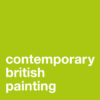Artist of the Month February 2024:
Monica Metsers, selected and interviewed by Paul Newman for CBP.
Monica’s work reflects a lifelong infatuation with fantasy and the surreal. She is currently exploring depiction of place, particularly the landscapes she is repeatedly drawn to, those of both the Lake District and The West Coast and Islands of Scotland. She visits, explores and walks in both places regularly, where she uses a combination of memories, snapshots and pencil and watercolour sketches to create her works. In her paintings, she looks to express the place between seeing, feeling, experience and memory, and loves to connect with the viewer through this unspoken visual language.
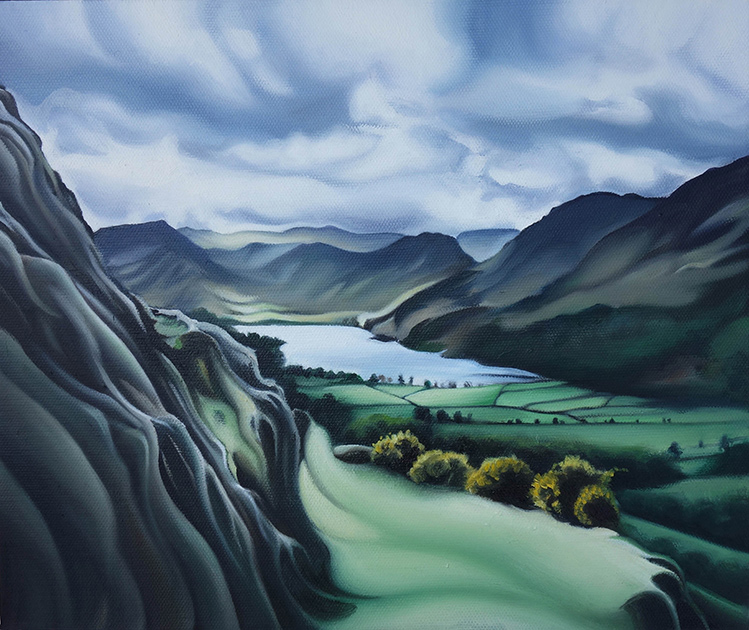
CBP: Your landscape paintings depict recognised rural areas of the Lake District, in a distinctive painting style connecting with your ‘lifelong infatuation with fantasy and the surreal’. These vistas almost feel like stage sets. Can you describe your approach to painting and how it evolved?
MM: I grew up in rural Cumbria in the middle of nowhere, surrounded by the Howgill Fells. Home life was often intense. I have a severely autistic younger brother, and as my parents were concentrating on caring for him, I would be out playing for hours in the countryside, often alone when I wasn’t at school. These fells in the backgrounds felt almost like quiet guardians and I would often look to them and imagine other worlds up there. I was an incredibly daydreamy kid and these fells have a particularly sculptural, tactile quality; I was obsessed with the Jim Henson fantasy era films like Labyrinth, so would often imagine I was in one of these ‘alternative’ realities with these landscapes as the background. I suppose it was a form of escapism.
Prior to formal art education I would often paint and draw landscapes, but I turned away from these initially as I felt I wasn’t adding anything new or exciting to the genre, and working with straightforward representation felt at odds with my natural painting style.
During my Masters degree, I began making small sculptures from found objects which I would the set up in compositions and paint from, often set up with very stylistic and dramatic lighting, exactly like stage sets as you described. I was aiming for a very tangible sculptural quality in these works. I continued this body of work well into my professional career before feeling the pull of the landscape again; I had started walking the Wainwright fells and the land itself was increasingly part of what I was living, breathing, imbibing – so I decided to give it another go. It immediately felt like this was something I could explore, develop and push the edges of; a new challenge, feeling very real and very positive.
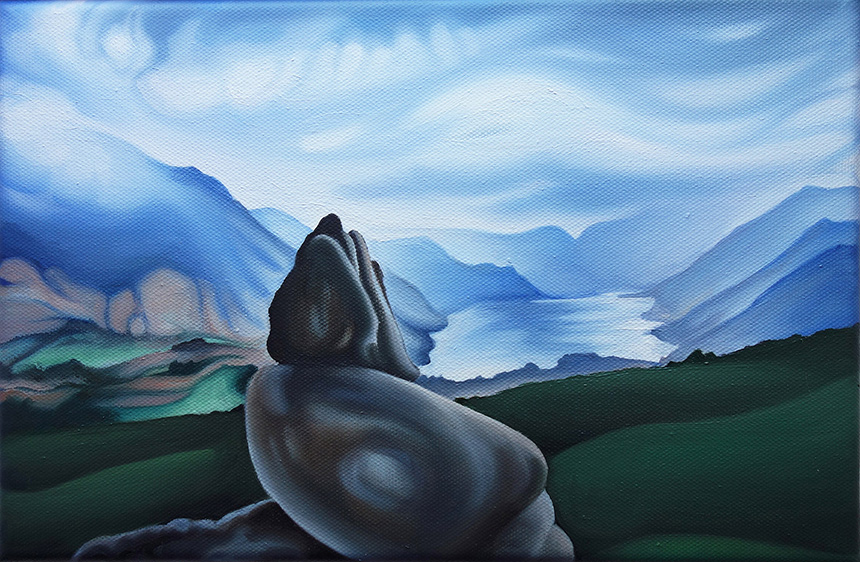
CBP: The landscapes you live in, walk in and experience are an essential aspect of your work. Can you discuss how these locations have imbedded into your painting journey.
MM: The feeling I get when I’m on top of the Lakeland Fells or walking a vast and empty Scottish beach are indescribable. It’s as close as I come to religion – putting myself into places where being human makes sense to me. There’s something very primal about walking the earth with no end goal, other than to traverse and experience. It’s that same sense I got when I was playing out as a child; sort of an escapism and a place of safety wrapped into one. The majesty of that feeling is what I’m always trying to capture in my paintings, and the lines, curves, and geography of places along with the light shows of the skies have embedded themselves into my subconscious. I’m always looking when I’m walking; I’m always looking to the sky when I’m in the house or travelling somewhere. There’s an invisible pull to vast, empty places.
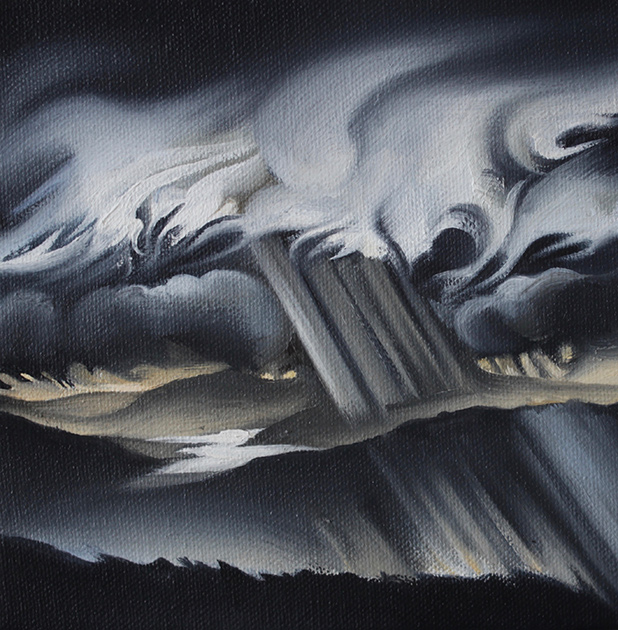
CBP: Can you talk about drawing processes in relation to your painting?
MM: Life drawing was my favourite module at University. The fundamentals of drawing are essential to how I construct my paintings; I usually start with a very basic pencil sketch on a blank canvas to suggest areas of line and texture that will form the basis of the finished piece. I under paint very quickly and spontaneously; although I paint in oils I often use acrylics and paint markers for this base layer which I will then go on to build up in layers of oil paint and glazes. I often draw and scratch back into paintings when I feel they are losing something in the variations of mark making and texture I’m hoping to achieve.
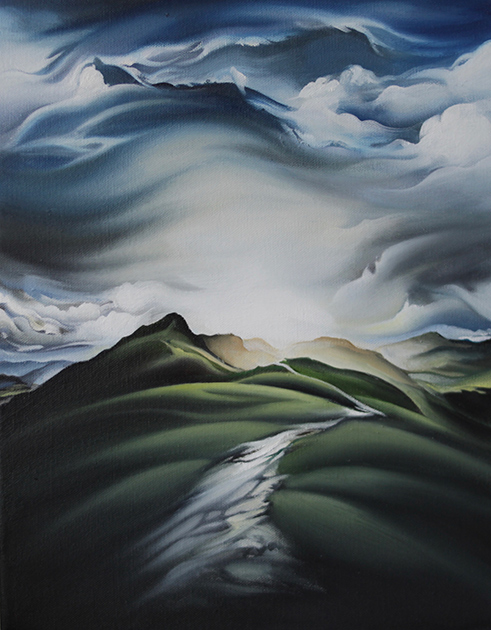
CBP: What part does working from photographic sources play in the development of the paintings?
MM: Again, it’s interesting that you mention stage sets, as I use photographic sources as references for ‘snapshots’ of mood, light and tone, alongside memory, experience and often in situ watercolour sketches. I notice what draws me in about the colours or light in a photographic reference and refer back to that, but there’s a point where intuitive painting takes over and finished pieces often deviate quite some way from the original references.
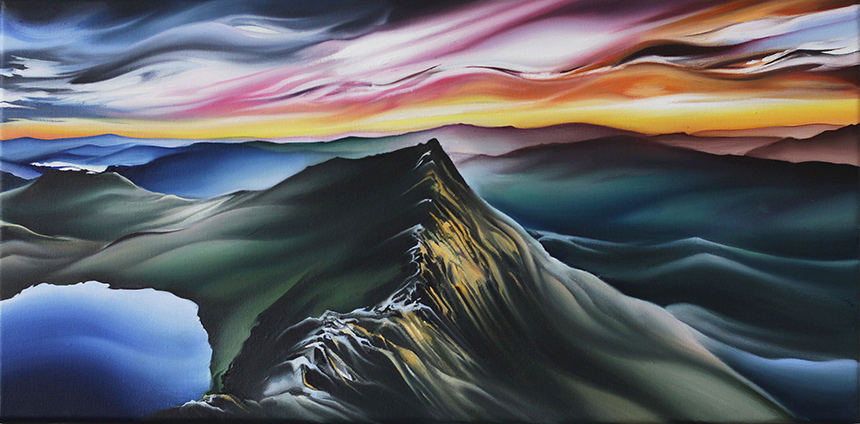
CBP: You mention Surrealism as an influence in your painting. I wondered if its connected to daydreaming or the concept of Magic Realism?
MM: I mentioned my obsession with fantasy films as a child, the construction of these ‘alternate realities’ has been an ongoing influence for sure, although it’s not something I ever overthink in my work. I try really hard to keep pushing forward with my work in a style that feels true to me; pushing the edges of it and discovering new places to take it. Stylistically Surrealism has felt like the best fit for some of my earlier work, but to be honest I think the way I paint draws from a huge variety of influences from hyperrealism to pure abstraction. It’s important to me to respect and do justice to the places I love, while offering something unique and of myself simultaneously.
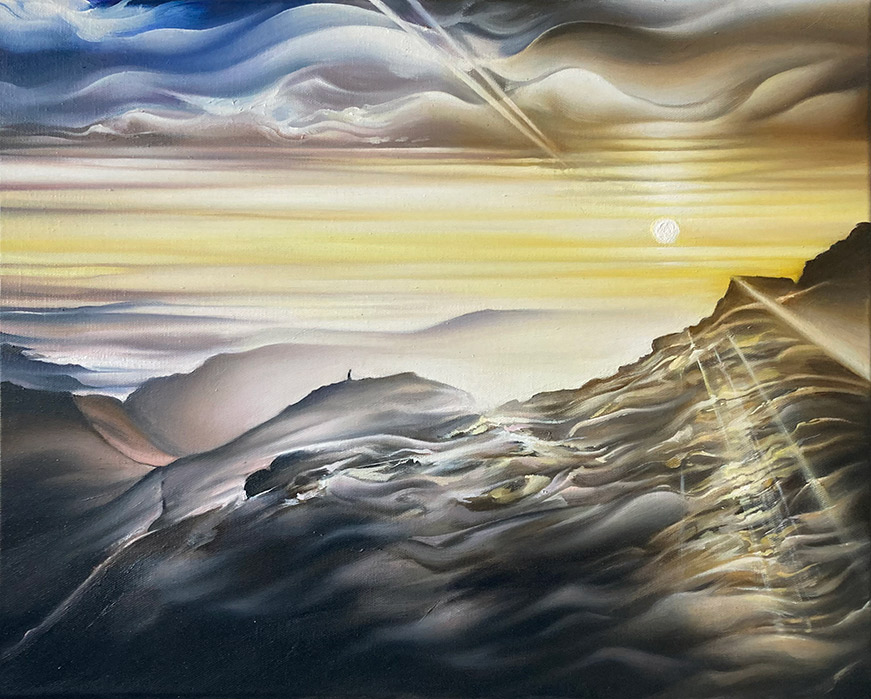
CBP: Stormy skies and seas are often depicted in your paintings. Are you inspired by Romantic era landscape painting like Constable and Turner or painting from your own elemental experiences?
MM: It’s primarily my own experiences, both the Lake District and Scotland are very mountainous landscapes which attract a lot of very dramatic weather and you see a lot of truly dramatic skies when a storm is breaking or the rain is clearing. I go out walking in all weathers and often experience all seasons in one day, especially on the fell tops!
I’m definitely inspired by painters who were masters at capturing weather and light, Constable and Turner being phenomenal examples. At the more contemporary end, although stylistically very different, I really admire Devon based painter Hester Berry’s captures of light and weather.
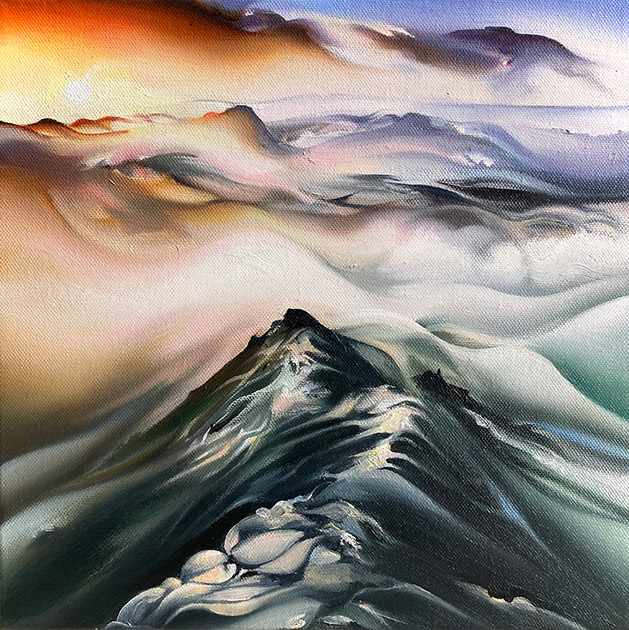
CBP: The light in your painting is very evocative of twilight or Gloaming, where it feels like the scene is growing dark. Can you talk about how you depict light in your painting?
MM: I love that interpretation, Paul! I’m drawn to high contrast, bold imagery, and again, I think this harks back to an exaggerated sense of reality. I always notice where light is falling, and focal; points of light always draw me in when I’m looking at other people’s work. I aim to make dynamic images and keeping my focus on the light in a painting helps me to achieve this.
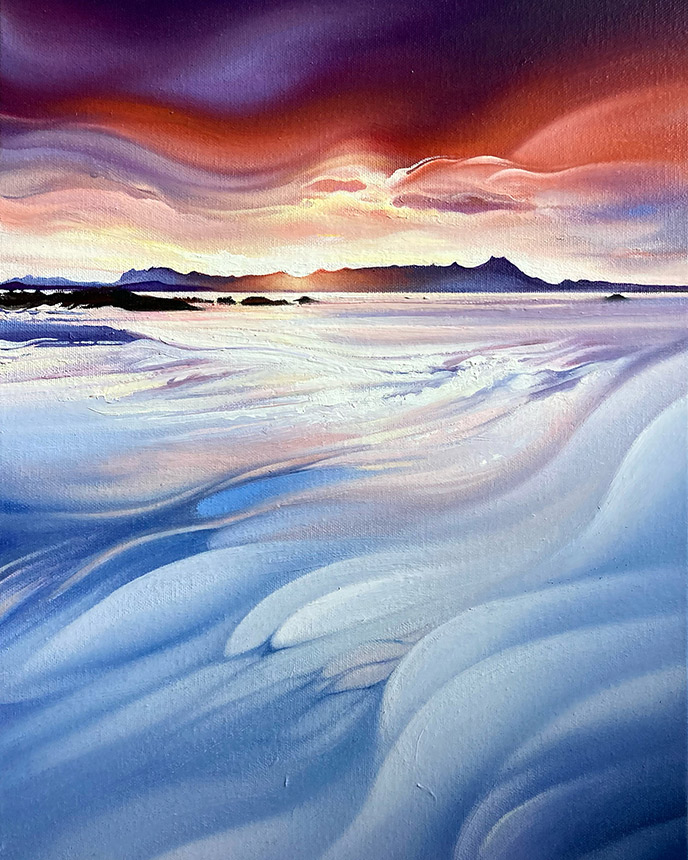
CBP: Describe a typical day in your studio.
MM: I’m fortunate to have a home studio, and like to work with natural daylight as much as possible, so I hit the ground running first thing in the morning and usually work through until around 4 or 5pm with only a short break for lunch. I have a ‘just keep turning up’ approach to my work and very rarely don’t feel like it; however I’ve learnt not to push it on those rare days when I’m really not feeling it and to just go outside or go and look at some art instead, it always works and I always come back refreshed and inspired.
I stand at an easel to paint and move back and forth often to assess the development of a painting at a distance. I like to keep my admin work for the evenings wherever possible, so I can make the most daylight for painting.
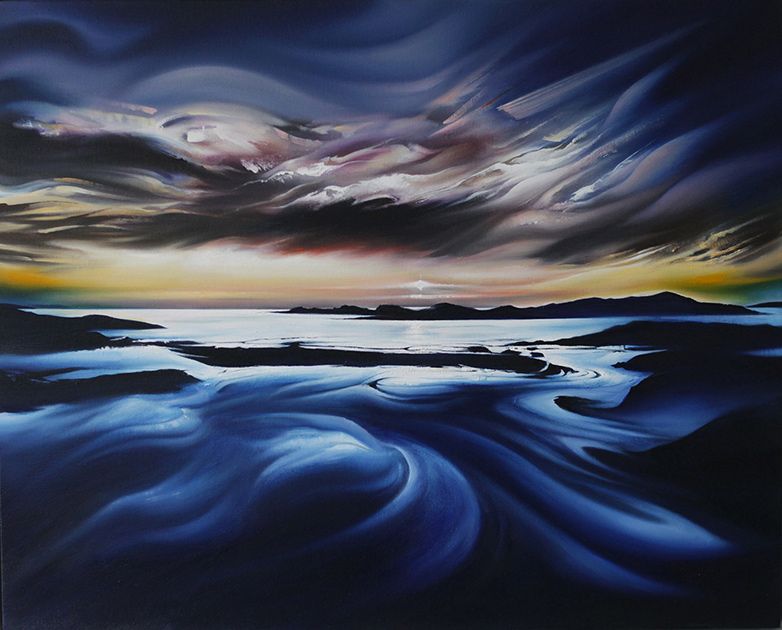
CBP: Can you give some insight into your painting process?
MM: I back paint a piece very quickly, and try not to overthink it. I find that having this foundation helps clarify what direction I need to take a piece in, there are always areas of raw energy that arise in this first layer, and I’ve become better over time at recognising when I need to retain these and not overwork them. I work in thin layers of oil and glazes with medium added and build up the thickness to varying degrees. I generally use soft brushes, I love angled blenders in particular, but also use palette knives for scratching in or applying paint and sponges for adding texture.
Because of the slower drying time with oils, I work on several pieces at once so I always have one with a dry surface to work on, which keeps things fresh. Although I have developed quite a specific style, I try to retain a sense of curiosity and playfulness in how I approach painting and make sure I regularly experiment in other media to avoid things becoming too repetitive or formulaic. Often a painting will sit on the studio wall for months until I get a sense of what it needs to bring it to completion.
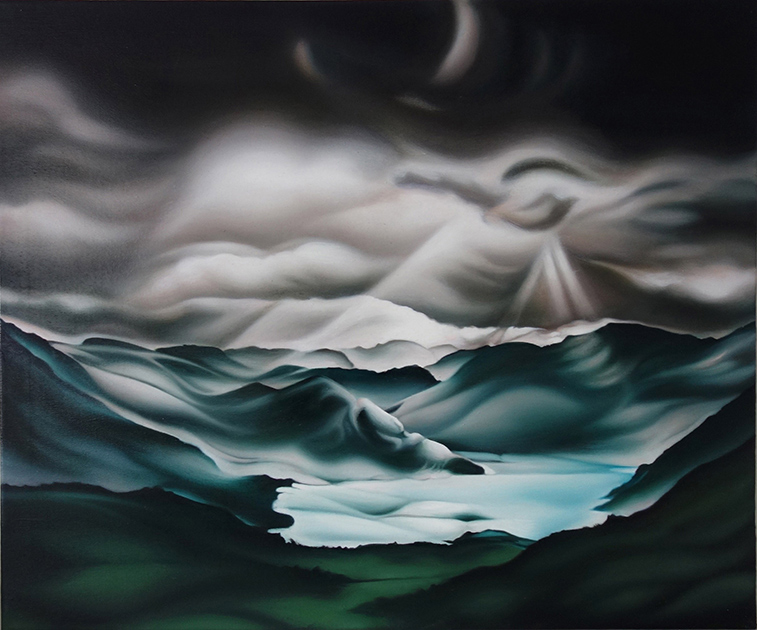
CBP: What projects are you working on at the moment?
MM: I have ongoing private commissions, alongside these I am currently really interested in extremes of scale, and am planning both some miniatures and also working on a series of larger scale Lake District mountain paintings which I am hoping to exhibit later on this year.
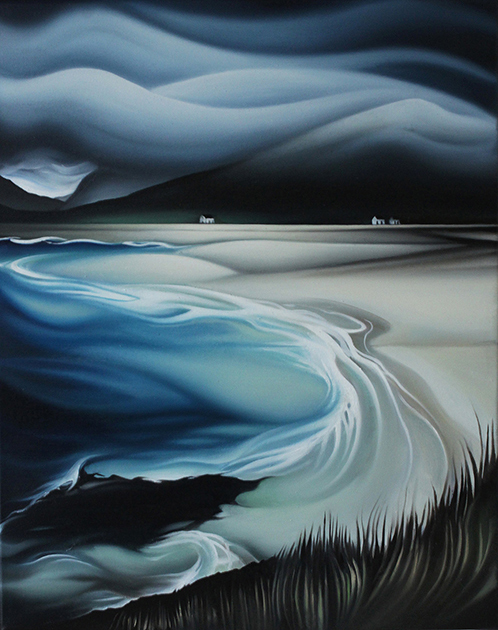
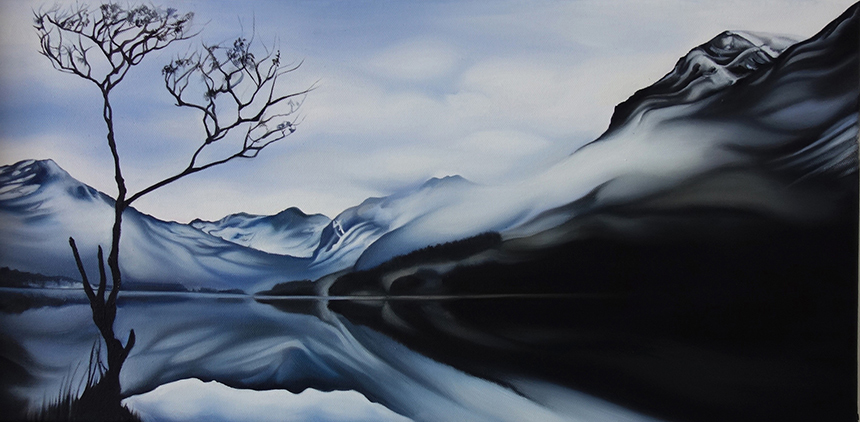
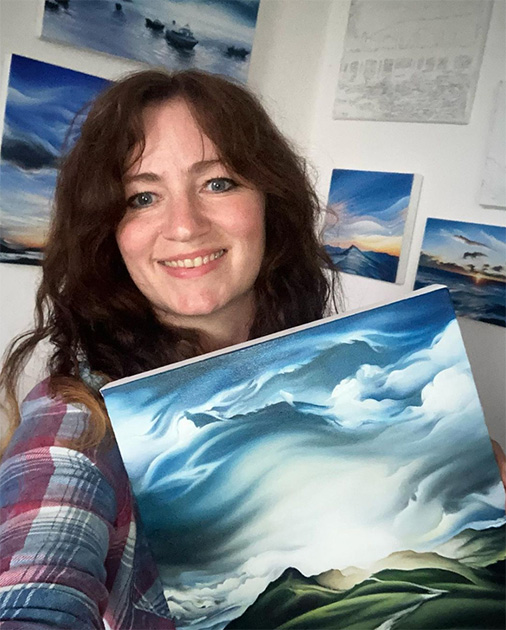
Monica Metsers was born in 1980 in Wellington, New Zealand, but has lived in the English Lake District for the majority of her life. Monica graduated from the University of Dundee with a Masters Degree in Fine Art in 2005 and has been steadily exhibiting and selling her work nationally since then.
Recent exhibitions include; Lake Artist Society Summer Exhibition, Grasmere Hall, Summer 2023, Darkness At Noon, APT Gallery, London, November 4th – 14th, 2021, Lake Artist Society Summer Exhibition, Grasmere, 2019, Edgelands, Kendal Museum, 2019, Made In Britain (82 Painters of the 21st Century), National Museum of Gdańsk, Poland, 2019, Without Boundaries, Dock Museum, Barrow, November 2018
